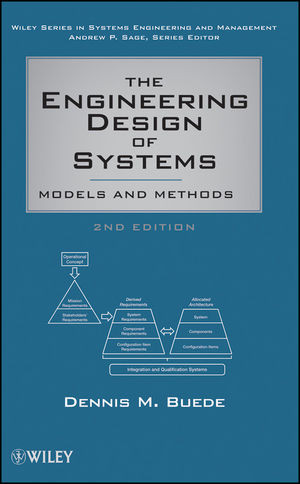

Most ebook files are in PDF format, so you can easily read them using various software such as Foxit Reader or directly on the Google Chrome browser.
Some ebook files are released by publishers in other formats such as .awz, .mobi, .epub, .fb2, etc. You may need to install specific software to read these formats on mobile/PC, such as Calibre.
Please read the tutorial at this link: https://ebookbell.com/faq
We offer FREE conversion to the popular formats you request; however, this may take some time. Therefore, right after payment, please email us, and we will try to provide the service as quickly as possible.
For some exceptional file formats or broken links (if any), please refrain from opening any disputes. Instead, email us first, and we will try to assist within a maximum of 6 hours.
EbookBell Team

5.0
90 reviewsThe Engineering Design of Systems, Second Edition compiles a wealth of information from diverse sources to provide a unique, one-stop reference to current methods for systems engineering. It takes a model-based approach to key systems engineering design activities and introduces methods and models used in the real world. Features new to this edition include:
The addition of Systems Modeling Language (SysML) to several of the chapters, as well as the introduction of new terminology
Additional material on partitioning functions and components
More descriptive material on usage scenarios based on literature from use case development
Updated homework assignments
The software product CORE (from Vitech Corporation) is used to generate the traditional SE figures and the software product MagicDraw UML with SysML plugins (from No Magic, Inc.) is used for the SysML figures
This book is designed to be an introductory reference and textbook for professionals and students in systems engineering. It is also useful in related courses in engineering programs that emphasize design methods and models.Content:
Chapter 1 Introduction to Systems Engineering (pages 1–48):
Chapter 2 Overview of the Systems Engineering Design Process (pages 49–72):
Chapter 3 Modeling and SysML Modeling (pages 73–103):
Chapter 4 Discrete Mathematics: Sets, Relations, and Functions (pages 104–121):
Chapter 5 Graphs and Directed Graphs (Digraphs) (pages 122–147):
Chapter 6 Requirements and Defining the Design Problem (pages 149–210):
Chapter 7 Functional Architecture Development (pages 211–251):
Chapter 8 Physical Architecture Development (pages 252–283):
Chapter 9 Allocated Architecture Development (pages 284–318):
Chapter 10 Interface Design (pages 319–340):
Chapter 11 Integration and Qualification (pages 341–371):
Chapter 12 Graphical Modeling Techniques (pages 373–400):
Chapter 13 Decision Analysis for Design Trades (pages 401–450):